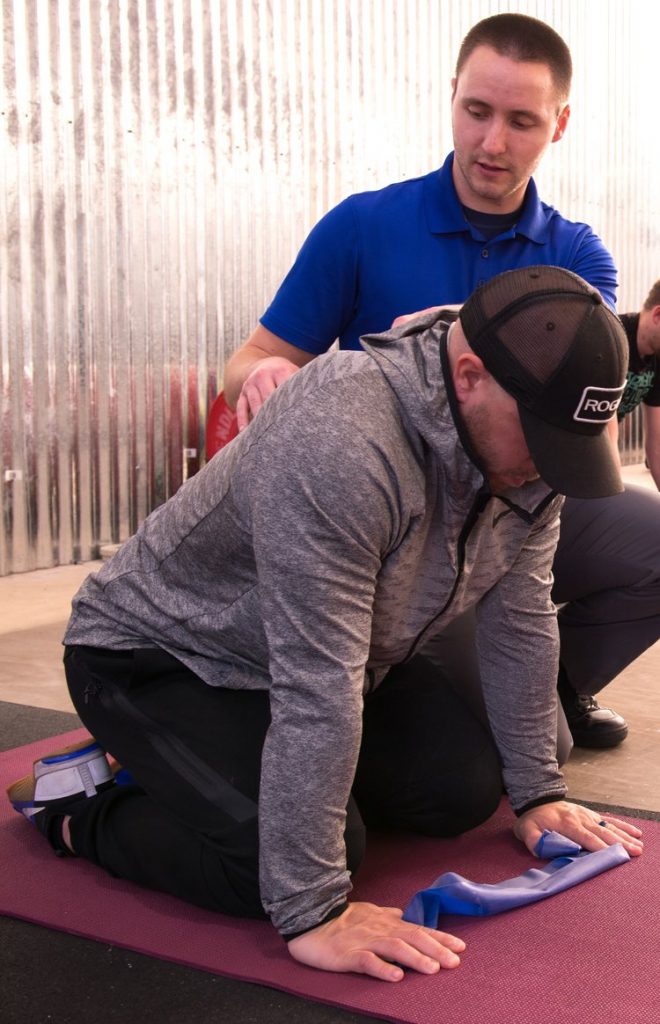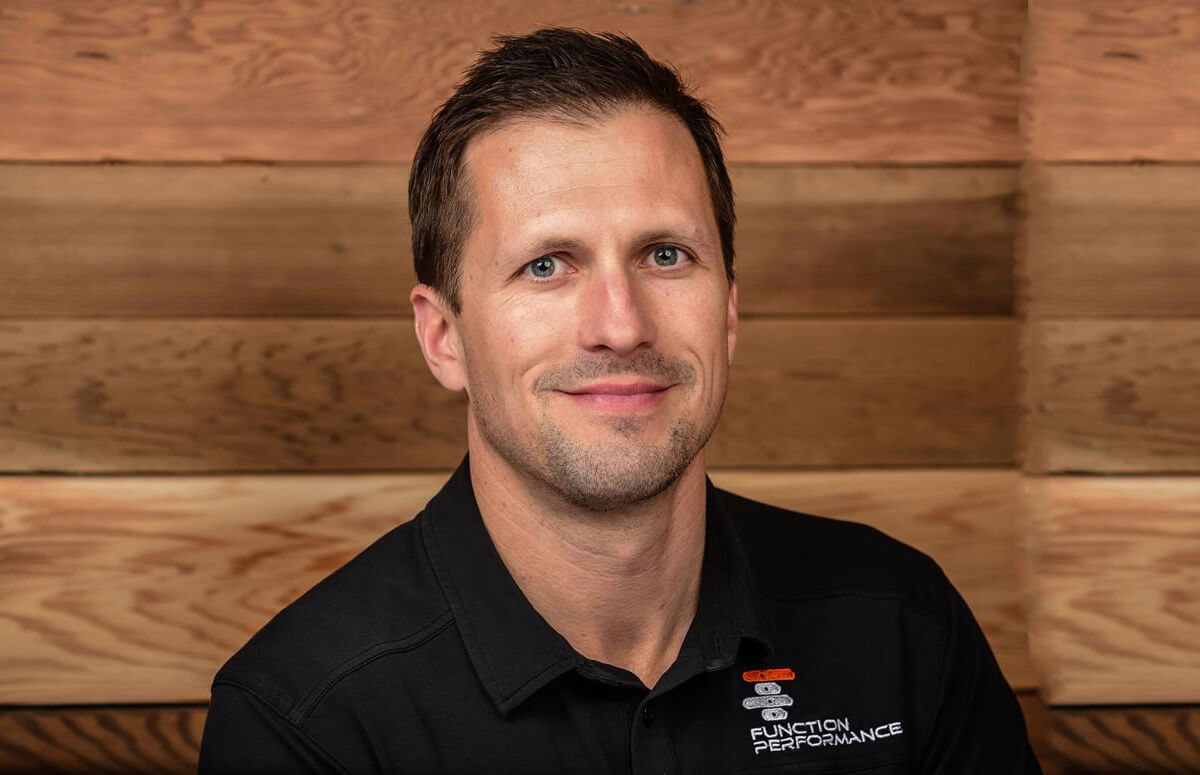First off, we would like to thank those who were able to come to our Active Shoulder and Core Workshop yesterday! This was part of a monthly series where we go in-depth on a region of the body and how to increase performance and function. In case you missed it or you just want a refresher, here is a quick recap of a few of the things we went over.

Dr. Kyle working cueing movement in the upper spine.
Neck Stability
We started off with a quick lesson in how your neck and upper back posture can greatly affect your shoulder function. After running through some baseline shoulder movements, we went into an exaggerated poor posture. The forward head and shoulder position and the overly rounded upper back immediately limited movement and a lot of the participants found that shoulder movements with exaggerated poor posture caused some familiar stiffness or pain.
The exercise that we used to find out if you could use some work on your neck stabilizer muscles was the head lift with the chin tucked:
A lot of shaking, or the inability to hold that chin-tucked position indicated that some targeted neck exercises would be a great addition to your daily movement habits. Perform 2-3 seconds holds of the chin retractions while lying face up on the ground, and then progress to lifting your head up off the ground while keeping the chin tucked for sets of 4-6 holds.
Breathing Dysfunction
We then went demonstrated how proper diaphragmatic breathing was able to help relax some of the muscles in the neck and shoulders. The crocodile breathing exercise focused on feeling the air going down towards your pelvis, and the pressure of the air pushing your abdomen into the ground. We will cover more ways to practice diaphragmatic breathing in future workshops as well. 25 breaths performed 2-3 times a day can go a long way in alleviating tension in your neck and shoulders.
Upper Back Mobility
Next, we explored a few exercises to improve the mobility of your upper spine. We demonstrated with the wall angel evaluation how limitations in the upper back movement can affect how well you can control your rib positioning and your arm movements. To get more movement in that upper part of your back, the modified sphinx position can be used. Perform 10-15 repetitions alternating between bringing the spine up towards the ceiling and then bringing your chest down towards the floor with an emphasis on moving just those top few segments in the back.
The side-lying windmill exercises builds on that by adding in some critical rotation to the thoracic spine. Really striving to reach the fingers away from your body, and leading the movement with your eyes are important. Strive to perform a few sets of 8 repetitions throughout the day or prior to a workout.
Integrating the Shoulder and Core
We ended with the banded wall walk exercise. This exercise really challenged everyone’s ability to integrate proper core positioning with movement of the arms. Things to strive for with this exercise was to maintain the rib position over the pelvis as well as resisting the tendency to dive the head forward or shrug the shoulders up towards the ears.
This was just a quick recap of some of the evaluations and exercises we did at our Active Shoulder and Core Workshop. Keep an eye out in the future for information on our next Active Workshop series focusing on the hip hinge pattern and the posterior chain!



